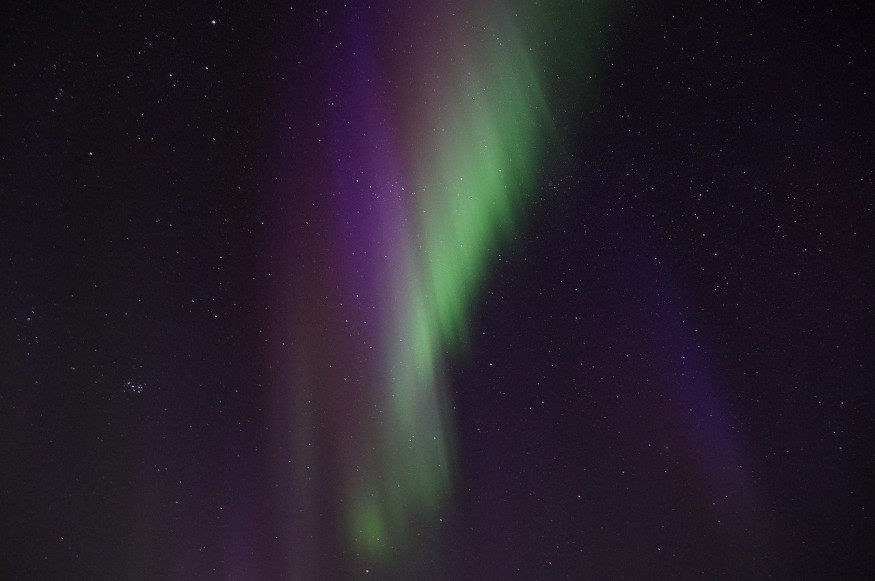The Space Weather Forecast Center (SWPC) at National Oceanic and Atmospheric Administration (NOAA) issued a Geomagnetic Storm Watch for Saturday, October 1. The said geomagnetic storm is said to be moderate but a potentially disruptive event.
The warning also said that the strong geomagnetic storm could produce atypical Northern Lights or aurora as low as in the US from New York to Wisconsin to Washington state. Moderate levels of G2 storm are likely to happen on Saturday, while a G1 storm is expected on Sunday night, October 2.

Northern Lights Could Be Visible in Large Area
Coronal mass ejections (CMEs) carry billions of tons of coronal material and an embedded magnetic field, frozen in flux that is stronger than the solar wind. They travel outward from the Sun at different speeds in which some could reach the Earth within 15 to 18 hours and others reaching after a couple of days.
SWPC said that CMEs could expand as they propagate away from the Sun and larger ones are up to a quarter the size between Earth and the Sun. As it interacts with the magnetosphere of the planet, a variety of things could happen.
According to Weatherboy, NOAA's DSCOVR satellite will be one of the first spacecraft to detect the real-time solar wind and SWPC forecasters will release the appropriate warnings. A G3 storm usually drives an aurora further away from its normal polar residence. Sometimes, other factors could even bring it to as low as Pennsylvania, Iowa, and northern Oregon.
The location and probability of the presence of aurora are based on the Kp index of the geomagnetic storm. SWPC said that Kp is an excellent indicator of disturbances recorded in the magnetic field that they use to decide what type of warnings they need to issue. More so, Kp is used to indicate how low, latitude-wise the aurora will be.
The current NOAA SWPC weather forecast said it will be a G2 moderate geomagnetic storm event with a Kp index of 6. The higher the number, the more vibrant the aurora will be, and that also means it could establish itself high above the US in southern locations where Northern Lights are not usually seen.
If the Kp index grows higher, like a Kp index of 7, Northern Lights could be present in Boston, Chicago, and Seattle. Meanwhile, a Kp index of 9 or more could illuminate the clear skies of Washington, D.C., Saint Louis, Denver, and even Salt Lake City. Records also show that an aurora in the past has become visible in Hawaii and the central Caribbean.
READ ALSO : Geomagnetic Storm is Expected to Form as Powerful Solar Wind Threatens to Hit Earth's Magnetic Field
History of Northern Lights
Italian astronomer galileo Galilei coined the term "aurora borealis" in 1619 from the Roman goddess of dawn Aurora and the Greek god of the north wind Boreas, according to Space.com. The oldest known record of aurora borealis was found in a 30,000-year-old cave painting in France.
Civilizations who witnessed the celestial phenomenon have marveled at the Northern Lights, ascribing all sorts of myths to the beautiful dancing lights. The Vikings thought the Northern Lights were reflecting the light off the armor of the Valkyrie, while one North American Inuit legend suggests the lights are spirits playing a ball of walrus head.
Ancient astronomers have also talked about the aurora in their records, such as the one from 567 B.C. under Babylon's ruler King Nebuchadnezzar II, and a Chinese 193 B.C. that also noted the appearance of aurora.
The science behind the aurora was only known in the 20th century when Norwegian scientist Kristian Birkeland proposed that electrons from solar winds reaching the northern magnetic field caused the Northern Lights. His theory was later on proven right, but not after Birkeland's death in 1917.
RELATED ARTICLE : Geomagnetic Storm Triggered Auroras on Lower Latitudes; What Are the Effects of the Recent Solar Flare on Earth?
Check out more news and information on Space in Science Times.












